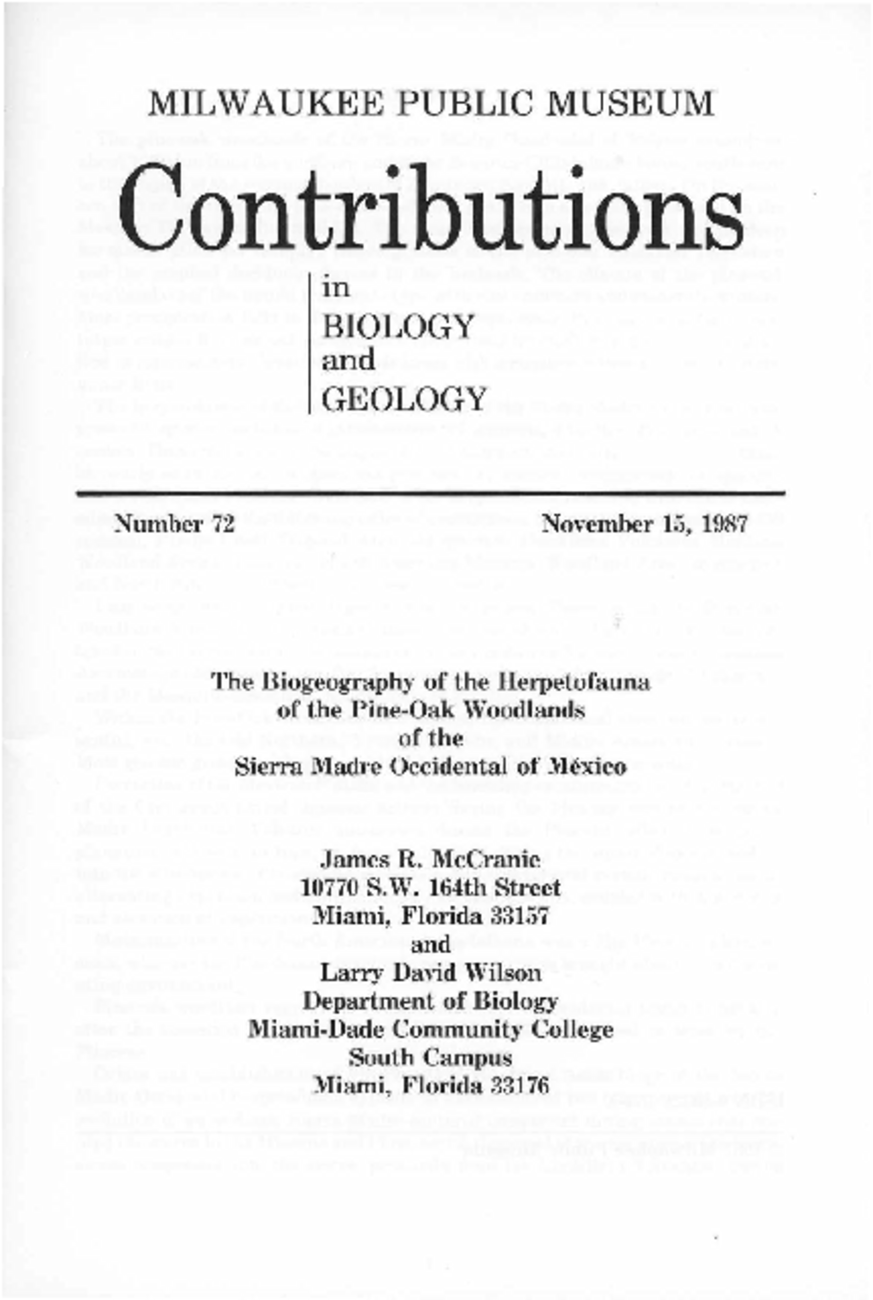The Biogeography of the Herpetofauna of the Pine-Oak Woodlands of the Sierra Madre Occidental of Mexico
The pine-oak woodlands of the Sierra Madre Occidental of Mexico extend for about 1100 km from the northern end ofthe Sonoran-Chihuahuan border southward to the region ofthe common borders of Zacatecas, Nayarit, and Jalisco. On the eastern side of the sierra the pine-oak woodlands grade into mesquite-grassland on the Mexican Plateau in the foothills. The steep escarpment on the west and its deep barrancas allow for complex interdigitation of the pine-oak woodland vegetation and the tropical deciduous forests in the lowlands. The climate of the pine-oak woodlands is of the humid temperate type with cool summers and moderate winters. Most precipitation falls in July, August, and September. Pine-oak woodland vege- tation ranges from an oak scrub at the lower limit through mixed pine-oak vegetation at intermediate elevations to pine forest with a mixture ofboreal elements at the upper limit.
The herpetofauna of the pine-oak woodlands of the Sierra Madre Occidental comprises 86 species, including 3 salamanders, 17 anurans, 3 turtles, 27 lizards, and 36 snakes. These 86 taxa may be placed in four distributional categories, viz., endemic or nearly so (8 species), widespread pine-oak (17 species), widespread (17 species), and peripheral (44 species). Over 90% of the herpetofauna is shared with one or more adjacent regions in the following order of prominence: Mesquite-Grassland Area (39 species), Pacific Coast Tropical Area (33 species), Cordillera Volcanica Montane Woodland Area (30 species), North American Montane Woodland Area (28 species), and North American Desertscrub Area (23 species).
(Milwaukee Public Museum Contributions in Biology and Geology Number 72)
Also attached is the Annotated Bibliography to The Herpetofauna Of The Pine-Oak Woodlands Of The Sierra Madre Occidental, Mexico.
(Smithsonian Herpetological Information Service Number 84)


